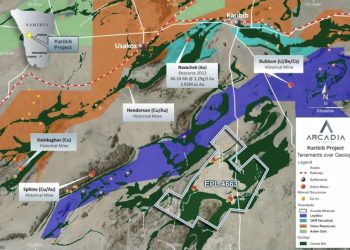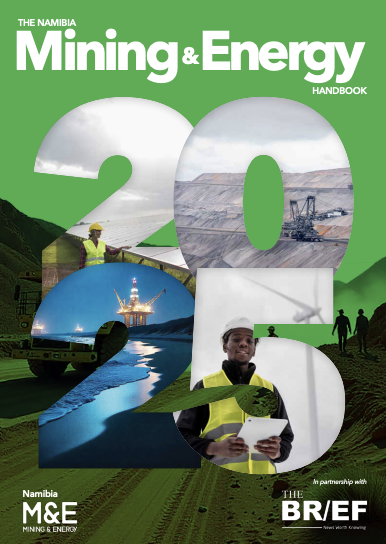
Koryx Copper has cut its 2025 drilling target at the Haib Copper Project in southern Namibia by nearly half, citing delays in equipment delivery and site conditions that have hampered night drilling.
The company announced that it will now drill 28,000 metres this year, down from the original plan of 55,000 metres, with most of the activity shifted to the second half of the year.
“We now have a bulked-up technical team in place, with additional drill rigs expected to arrive within the next few weeks, which should improve our drilling rate from the 2nd half of the year,” said Koryx Copper President and CEO, Heye Daun.
The revised drilling schedule affects Phases 2, 3 and 4 of the programme.
Phase 2 is expected to conclude by mid-2025, Phase 3 by the end of the first quarter of 2026, and Phase 4, intended to convert the full resource to the Indicated category—will run from the second quarter of 2026 to year-end.
Daun said the slower progress was largely due to the late arrival of man-portable rigs and terrain challenges that made night drilling unfeasible.
“The Haib copper/molybdenum project continues to incrementally improve, albeit at a slightly slower drilling and assaying pace than we expected earlier this year,” he said.
So far, the company has completed 29 out of 37 planned drill holes for Phase 2, covering 8,647 metres of diamond drilling. Results have confirmed wide and consistent copper mineralisation, including a standout intercept.
“A very pleasing large intercept of 572m @ 0.34% copper with multiple additional intercepts at significantly higher grades demonstrates the very large size, continuity and also grade upside inherent in our Haib open pit,” said Daun.
To speed up the programme, Koryx plans to mobilise four more man-portable rigs in the second half of the year. These will add to the two track-mounted and two skid rigs already on site.
The company is also revising its geological model, using new structural, lithological and geochemical data, alongside relogging of historical drill holes.
“The ultimate aim of this improved geological modelling exercise is to ensure consistency, enhance geological domaining, and ultimately produce an improved geological model and mineral resource estimate for the Haib project,” Daun said.
In parallel, Koryx is advancing work on metallurgical testing and infrastructure studies—covering tailings, power, water and concentrate transport—ahead of an updated technical report due by the end of 2025.
“Together with the various engineering specialists, we have also made exceptional progress with the ancillary studies, all towards an updated technical report to be published late in 2025,” Daun added.







